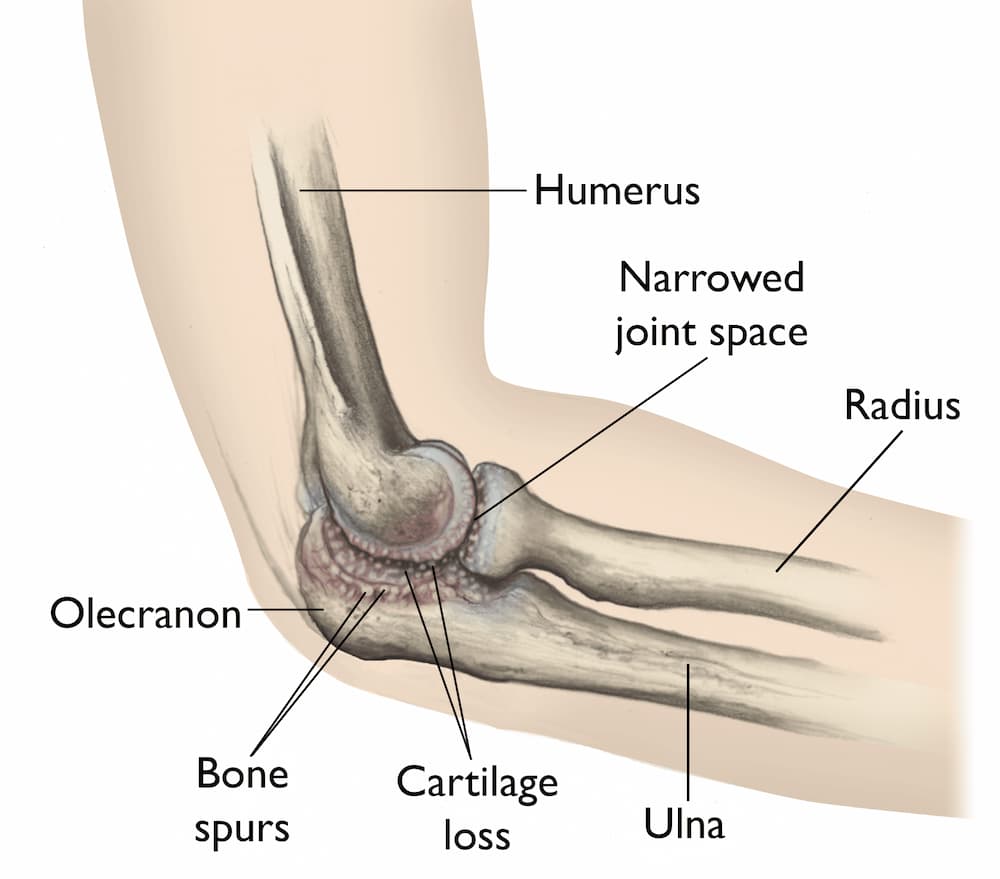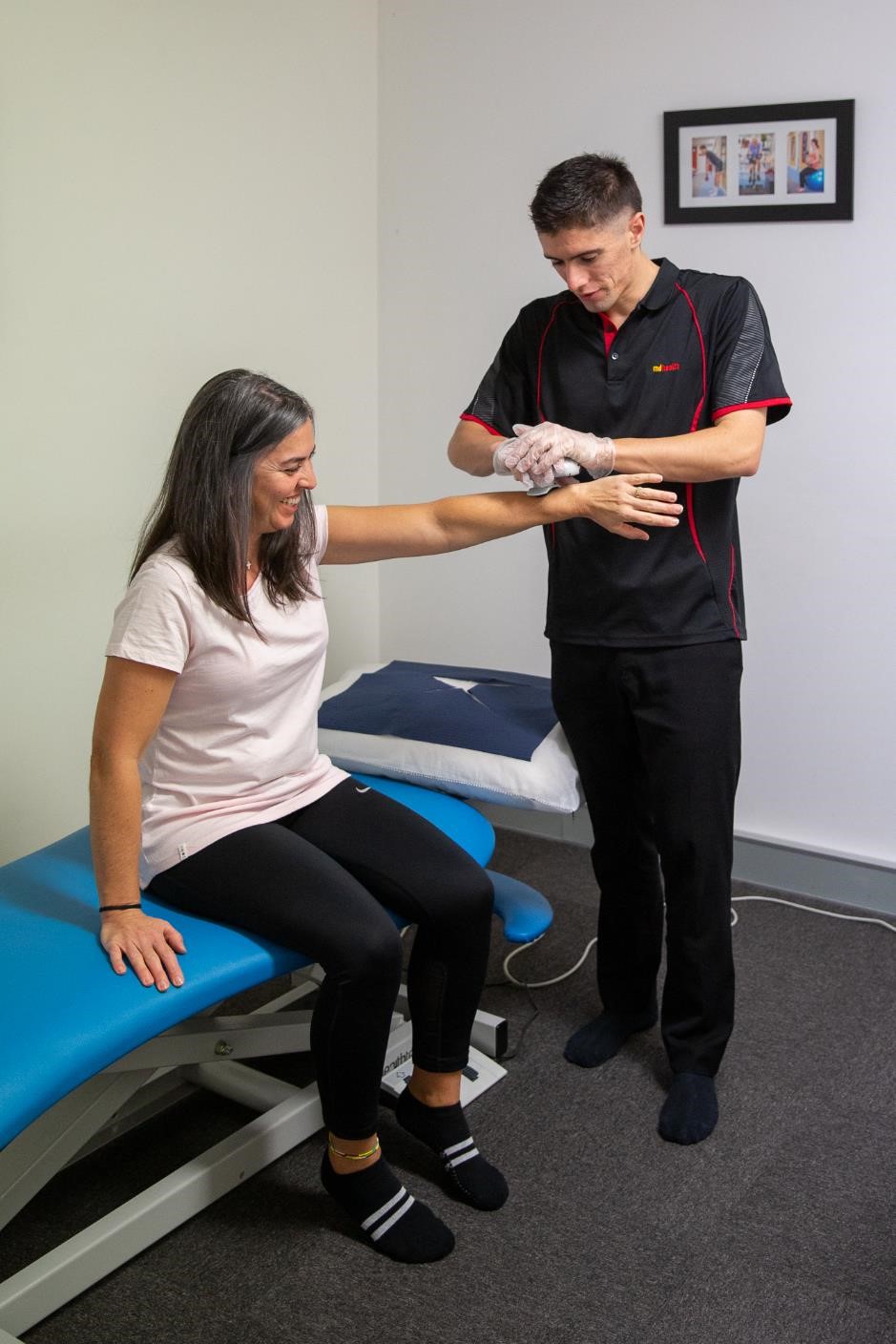Elbow Osteoarthritis - Fact Sheet
What is it elbow osteoarthritis?
As the cartilage surface of the elbow becomes worn or injured, osteoarthritis develops. This may occur due to a prior injury, such as a dislocation or fracture of the elbow. In most cases, however, it is the consequence of age-related and activity-related wear and tear on the joint cartilage.
Typically, osteoarthritis affects weight-bearing joints, such as the hip and knee. Due to its well-adjusted joint surfaces and robust stabilizing ligaments, the elbow is one of the least affected joints. Thus, the elbow joint can withstand significant stresses without becoming unstable.

What causes Elbow Osteoarthritis?
Elbow osteoarthritis is typically caused by the degeneration of the joint cartilage that covers the ends of the bones in the elbow joint. This degeneration can occur due to various reasons, including aging, repetitive use, and previous injuries such as a dislocation or fracture. When the cartilage wears out, the bones of the elbow can rub against each other, leading to pain, swelling, and stiffness in the joint. Other factors that may contribute to the development of elbow osteoarthritis include genetics, obesity, and certain medical conditions, such as rheumatoid arthritis.

Signs and Symptoms of Elbow Osteoarthritis
Pain – Pain in the elbow joint is the most common symptom of elbow osteoarthritis. The pain may be mild or severe, and it can be aggravated by movement or pressure on the joint.
Stiffness – Stiffness in the elbow joint may make it difficult to move the arm or fully extend it.
Swelling – The elbow joint may become swollen and tender to the touch.
Limited Range of Motion – Range of motion in the elbow joint may become limited, making it difficult to perform daily activities such as reaching or grasping objects.
Crepitus – A crunching or popping sensation may be felt or heard when moving the elbow joint.
Weakness – Muscles surrounding the elbow joint may become weaker due to the condition, making it difficult to lift objects or perform certain activities.
If you are experiencing any of these symptoms, it is important to consult with a physiotherapist for an accurate diagnosis and treatment plan.

Treatment of Elbow Osteoarthritis?
Manual therapy – such as joint mobilization and soft tissue mobilization, can help to reduce pain and improve joint mobility.
Exercise therapy – is often recommended to improve muscle strength and flexibility around the elbow joint. Specific exercises may include range of motion exercises, strengthening exercises, and stretching exercises.
It’s important to start these exercises slowly and gently, and gradually increase the intensity as your range of motion improves. It’s also important to consult with a our physiotherapists to determine the best range of motion exercises for your individual needs and condition.



